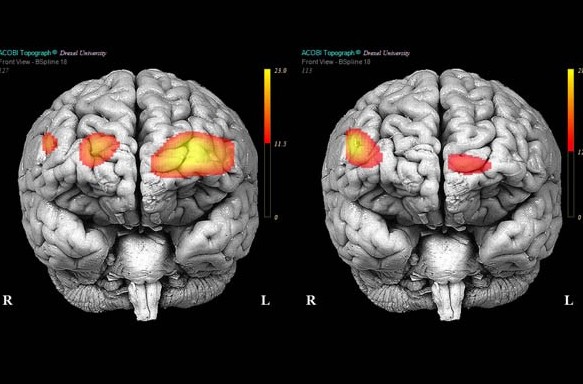
 The field of psychiatry is heating up, and neuroscientists are discovering what is going on in our minds in the fog of mental illness.
The field of psychiatry is heating up, and neuroscientists are discovering what is going on in our minds in the fog of mental illness.
What makes a brain Borderline? The old adage about two people being on different wavelengths — its true! The diagram above, on the right shows a ‘healthy’ well adjusted brain, on the left the brain of someone with borderline personality disorder. The heat signatures, show for the first time the neurological basis of a serious but all too common mental health condition. But what do these heat patches actually mean? We begin in the limbic system; all brains have one. It the emotional control centre for human beings, and it is here that trauma, mental illness, and neural circuitry intersect.
Amygdala- The primitive part of the brain which regulates fear and aggression. In the general population it’s a vital tool for survival; even in the comfortable, safe, clockwork cities of modernity, emotions can be lifesaver. However: Brain scans have shown people with BPD have amygdala’s that are noticeably smaller than the general population, and may even have undergone atrophy. The smaller the amygdala, the more overactive it is. This means when people with Borderline Personality Disorder, experience an emotion, they do so more intensely than the general population, and the ‘cooling down’ period takes much longer…. –Kevin Redmayne, medium.com, May 23, 2015


